Golfers of all abilities will eventually experience a slice or hook. It can be frustrating and seemingly impossible to correct. In this Definitive Guide to Golf Slice and Hook, we’ll answer some common questions about the two shots, provide product reviews of some popular corrective products, and offer some tips on how to finally fix your swing.
Table of Contents
What is a Slice in Golf?
A slice in golf is when the ball veers sharply off to the right of the intended target. A sliced shot can be caused by several different swing flaws, but is most often the result of an out-to-in or over-the-top swing path. Slices are also commonly caused by incorrect clubface alignment at impact, or by gripping the club too tightly.
There are a few different ways to correct a slice, but one of the most popular is to use a product like the SliceFixer Golf Swing Trainer. The SliceFixer is designed to help you correct your swing path and improve your clubface alignment at impact. It’s a great tool for any golfer who wants to fix their slice.
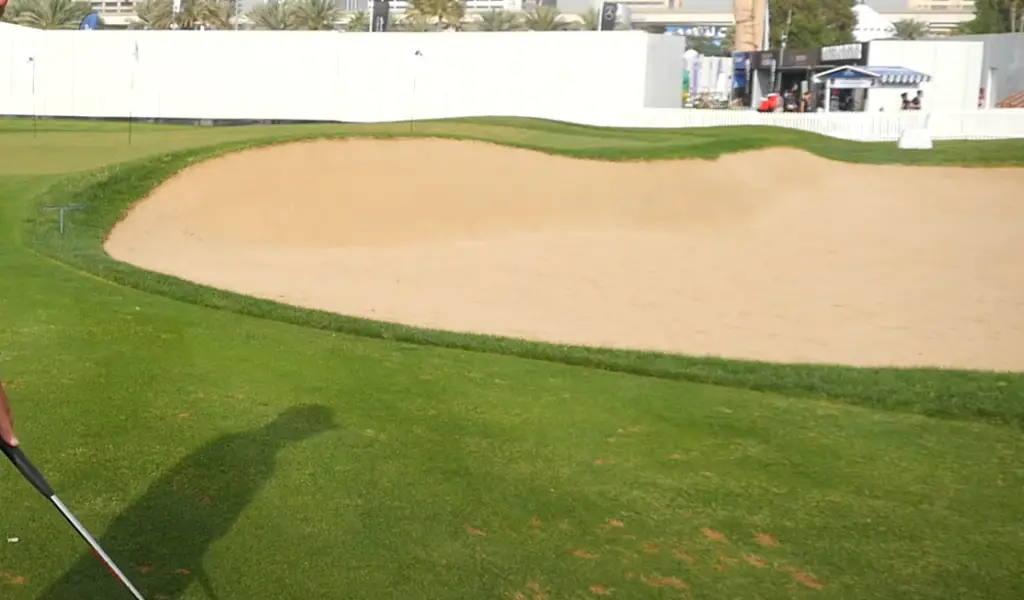
Another popular way to fix a slice is to use a golf swing training aid like the PowerSwingPlus. The PowerSwingPlus is designed to help you develop proper muscle memory and improve your overall swing mechanics. It’s a great tool for any golfer who wants to improve their overall game, not just their slice.
If you’re struggling with a slice, there are plenty of ways to fix it. However, it’s important to remember that the only way to truly fix your slice is by practicing and mastering the correct golf swing mechanics. Use products like the SliceFixer and PowerSwingPlus to help you on your journey to a better game. [1]
What is a Hook in Golf?
A hook in golf is a ball that curves sharply from left to right. It’s the opposite of a slice, which curves from right to left. A hook can be caused by several factors, including an incorrect grip, an improper swing, or simply using the wrong clubs.
There are two main types of hooks: the power hook and the fade hook. The power hook is when you hit the ball with so much force that it literally hooks around the trees and back onto the fairway. The fade hook is when you purposely try to make the ball curve by hitting it with an outside-in swing.
Most amateur golfers tend to slice the ball more than they do anything else. This is because it’s very difficult to hit a power hook without years of practice. However, it is possible to learn how to fade the ball and control your hooks.
If you’re struggling with your hooks, there are a few things you can do to improve your game. First, make sure you have the proper grip. Second, work on your swing mechanics. And finally, invest in some quality golf clubs. [2]
Slice vs Hook
There are two main types of golf shots: the slice and the hook. The slice is when the ball curves to the right, while the hook is when it curves to the left. Most beginners tend to slice the ball, while more experienced players usually hook it.
So, what’s the difference between these two shots? Well, let’s take a closer look…
The first thing you need to know is that a slice is caused by an outside-to-in swing path, while a hook is caused by an inside-to-out swing path. Simply put, if you want to hit a straight shot, you need to make sure your club comes into contact with the ball in a straight line. If your club comes into contact with the ball at an angle, then you will either slice or hook the ball.
One of the main reasons why beginners slice the ball is because they grip the club too tightly. This causes them to swing the club erratically, which in turn makes it more likely that they will hit the ball at an angle. If you find yourself slicing the ball, try to relax your grip and focus on swinging the club in a smooth, controlled manner.
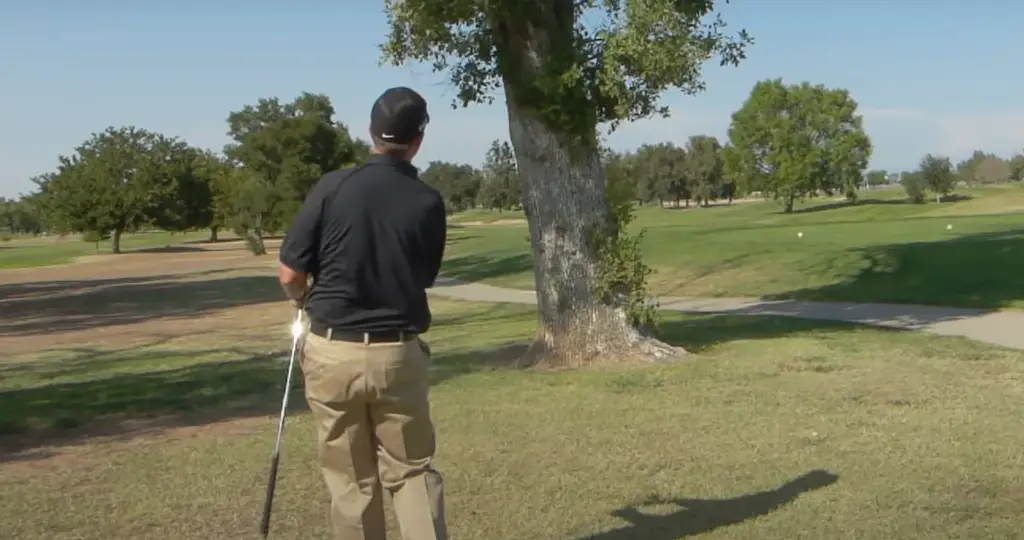
Another common cause of slicing is incorrect body positioning. If your shoulders are not aligned properly with your feet, then it’s very difficult to make a clean contact with the ball. As a result, you’re much more likely to slice it. Make sure to keep your shoulders square to your target and your feet shoulder-width apart to ensure a proper body alignment.
Finally, many golfers slice the ball because they fail to follow through with their swing. When you make contact with the ball, make sure to keep swinging your arms all the way through until they are in line with your shoulders. This will help you generate more power and prevent you from slicing the ball.
Now that we’ve covered the basics of the slice, let’s take a look at the hook…
Just like with the slice, a hook is caused by an incorrect swing path. However, instead of coming from the outside-in, it comes from the inside-out. This usually happens when golfers try to hit the ball too hard and they lose control of their swing. As a result, the club comes into contact with the ball at an angle, causing it to hook.
One of the best ways to avoid hooks is to focus on your grip. Make sure you’re holding the club lightly and that your thumbs are pointing down the shaft. This will help you maintain a proper grip throughout your swing and prevent you from losing control of the club head.
This will help you generate more power while keeping your arms in sync with each other. If your elbows start to flare out, then it’s very easy to lose control of your swing and hook the ball.Make sure you complete your swing. Just like with the slice, many golfers fail to do this and it causes them to lose power and accuracy. When you hit the ball, follow through by keeping your arms swinging until they reach your shoulders. Utilizing this method will help your ball go straighter and prevent hooks.
Fixing Slices and Hooks
Now that you know the difference between a slice and a hook, it’s time to start fixing them. If you want to hit straight shots, you need to make sure your club comes into contact with the ball in a straight line. Here are a few things you can do to correct your swing and avoid slicing or hooking the ball:
- Relax your grip and focus on swinging the club in a smooth, controlled manner.
- Keep your shoulders square to your target and your feet shoulder-width apart to ensure proper body alignment.
- Make sure to follow through with your swing. As you make contact with the ball, keep your arms swinging all the way through until they are in line with your shoulders.
With a little practice, you’ll be hitting straight shots in no time. The post above is a great guide on how to fix common golfing mistakes that might cause you to slice or hook your ball.
Grip
The grip is the only part of the golf club you are actually touching, so it makes sense that it would have a huge impact on your game.
There are a few different ways you can grip the club, but the most important thing is to make sure you’re comfortable. If you’re not comfortable, you won’t be able to swing correctly. There are three main grips: the overlapping grip, the interlocking grip, and the baseball grip.
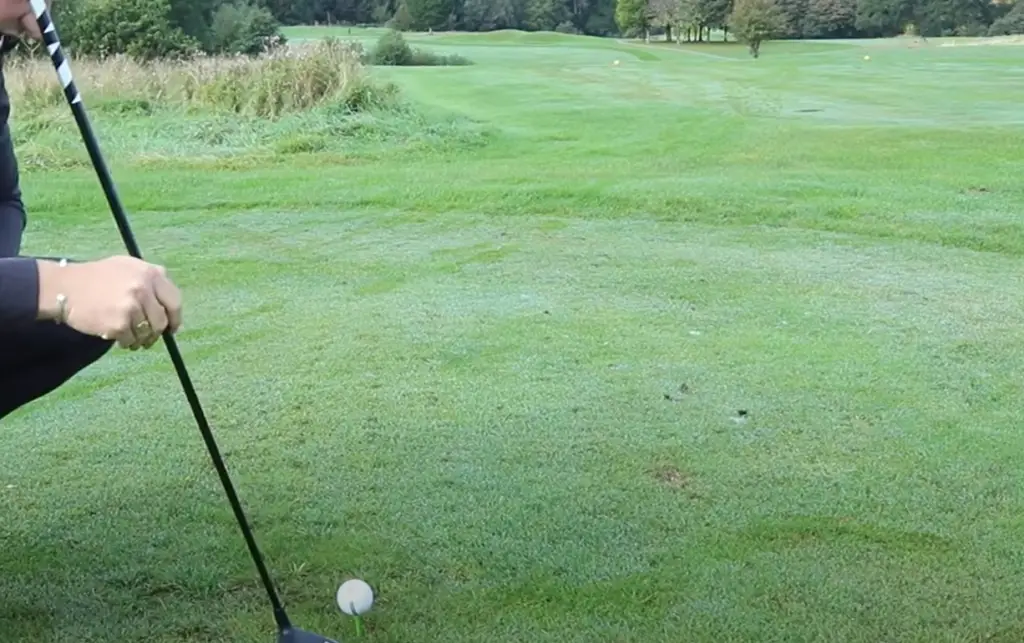
The overlapping grip is when you place your pinky finger on top of your index finger on the other hand. The interlocking grip is when you actually intertwine your fingers together. The baseball grip is when you hold the club like you would a bat.
Unfortunately, most golfers don’t give their grip nearly enough attention.
There are three main elements to a proper grip:
- Grip pressure
- Hand position on the club
- The position of your thumbs
If you can master these three elements, you will be well on your way to conquering your slice or hook.
Grip pressure is perhaps the most important element of a proper grip. If you grip the club too tightly, your muscles will tense up and you will lose power and accuracy. Conversely, if you don’t grip the club tightly enough, you will likely hook or slice the ball. The key is to find a happy medium- not too tight and not too loose.
The position of your hands on the club also plays a role in combating a slice or hook. For a proper grip, your hands should be positioned slightly to the inside of the ball (for a right-handed golfer). This will ensure that you make contact with the ball on the sweet spot of the club, resulting in straighter, more accurate shots.
Finally, the position of your thumbs plays a role in the grip as well. For a proper grip, both thumbs should be positioned on the top of the club, slightly to the inside of the shaft. This may feel awkward at first, but it will help you maintain control of the club throughout your swing.
Experiment with different grip pressures and hand positions until you find a grip that feels comfortable and gives you the most control over your shots. With a little practice, you’ll be hitting the ball straight and true in no time. [3]Setup and Ball Position
For a driver, you want the ball to be in the middle of your stance. For irons, you want the ball slightly forward of center. And with a wedge in your hand, you’ll want to play the ball back in your stance. This will help ensure solid contact and allow you to hit down on the ball, creating backspin and increasing your control.
Your feet, shoulders, and hips should all be in line with the target. This will help you square up the clubface at impact and hit the ball dead-center on the sweet spot. From here, take your stance using a shoulder-width or slightly narrower stance. Your weight should be balanced and distributed evenly on both feet.
As for your grip, you’ll want to hold the club in your fingers, not your palms. And be sure to overlap your left hand over the top of the right if you’re a right-handed golfer. This will help ensure that the clubface remains square throughout your swing.
Finally, make some practice swings to get a feel for the club and your stance. Remember, it’s important to maintain your balance throughout the swing, so take your time and don’t rush it. Once you’re ready, you can start your backswing.

When taking your backswing, be sure to turn your shoulders first, then your hips. This will help ensure that you keep your weight balanced and don’t shift it too far to either side. As you turn back, cock your wrists and bring the club up so that it’s in line with your shoulder. From here, you can start your downswing.
Takeaway
If your slice is still persistent even after improving your grip and setup to the ball, you’re probably making incorrect face control and/or swinging too far out-to-in on the ball.
Backswing flaws lead to difficulties in your downswing.
A great way to check if your swing is on point is by taking note of the takeaway (backswing to club parallel). That’s why, before making their swing, you’ll commonly see a lot of PGA Tour professionals, such as Justin Thomas, practicing their takeaways.
Maintaining clubface angle relative to spine and staying on plane are crucial for sustaining distance.
At this moment, if the clubface is pointing more skyward (open) or earthward (closed), you’ll be swinging the face one way or another. [4]
FAQ
Is it better to have a hook or slice?
There is no definitive answer to this question as it depends on the individual golfer’s strengths and weaknesses. If you are struggling with a slice, then working on correcting your hook can be beneficial. However, if you are already able to hit the ball straight consistently, then there is no need to change anything. Ultimately, it is up to the golfer to experiment with different techniques and find what works best for them.
Assuming that you are starting from scratch, here are some general tips:
- If you want more distance, focus on a draw (a controlled hook). This will also help if your natural tendency is to slice the ball.
- If you want more accuracy, focus on a fade (a controlled slice). This will also help if your natural tendency is to hit a hook.
- If you are struggling with both accuracy and distance, focus on hitting the ball straight. Once you have mastered this, you can then experiment with different shot shapes.
Keep in mind that it is very rare for a golfer to be able to consistently hit all three shots (straight, draw, and fade). Most golfers will have a natural tendency towards one of these shapes. Therefore, it is important to focus on your strengths and learn how to work the ball around the course accordingly.
Do most golfers hook or slice?
From my experience, the vast majority of amateur golfers slice the ball. This is likely due to the fact that it is one of the most common faults in the game. It is also worth noting that a lot of novice players tend to hit a fade, which is essentially a controlled slice. This shot can be useful for players who are struggling with accuracy and distance.
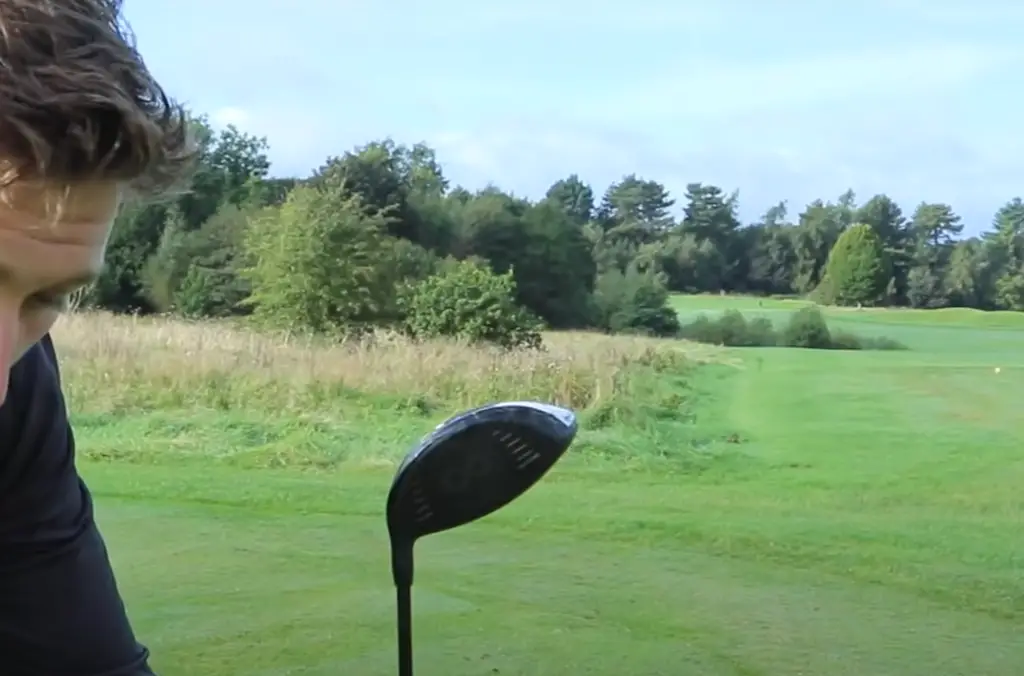
While there is no definitive answer, it seems safe to say that more golfers slice the ball than hook it. If you are having trouble with your hook, I would recommend working on correcting your slice first. Once you have mastered this, you can then start experimenting with different shot shapes.
Do hooks go further than slices?
This is a common question with a few different answers. In general, a well-struck hook will travel further than a slice because hooks are hit on the sweet spot of the clubface more often. However, this isn’t always the case. Slices can also be struck on the sweet spot and will travel just as far as hooks when they are. It really comes down to how well you make contact with the ball.
There are also different types of hooks and slices. A draw is a type of hook that goes slightly to the left but not as much as a full-blown slice. A fade is a type of slice that goes slightly to the right but not as much as a full-blown hook. So, in general, a draw will go further than a fade but again, it all comes down to how well you make contact.
If you want to hit your hooks and draw further, there are a few things you can do. First, make sure you’re using the correct clubs. Second, practice your swing and learn how to make solid contact with the ball. And finally, use a golf simulator to get instant feedback on your shots so you can fine-tune your technique.
What swing plane causes a slice?
The most common swing plane for a slice is an out-to-in path. This means that the clubface approaches the ball from outside the target line and then swings across the ball to the inside of the target line. An out-to-in swing can also be caused by a weak grip, which causes the club to roll over too much during the downswing.
Slices are also often caused by a lack of hip turn, which causes the shoulders and arms to over rotate. This can be caused by a number of things, including a weak grip, poor posture, or incorrect weight distribution.
Finally, slices can be caused by an incorrect clubface angle at impact. This is usually the result of either a closed clubface (pointing to the left of the target) or an open clubface (pointing to the right of the target).
All of these factors can contribute to a slice, but they can all be corrected with practice and proper instruction. If you find that you’re still slicing the ball after making some adjustments, it’s time to consult a professional golf instructor.
How do I stop slicing the ball?
There are a few things you can do to stop slicing the ball. One is to make sure that you have the correct grip. The other is to practice your swing and make sure that you are hitting the ball in the sweet spot. Finally, if you are still having trouble, you can invest in a golf lesson or two.
With the correct grip, your hands should be positioned on the club so that your thumbs point down the shaft towards the ground. This will help ensure that you hit the ball with the flat part of the clubface, rather than on the heel or toe. It also helps to keep your wrists firm when you swing so that they don’t break down and cause you to slice the ball.
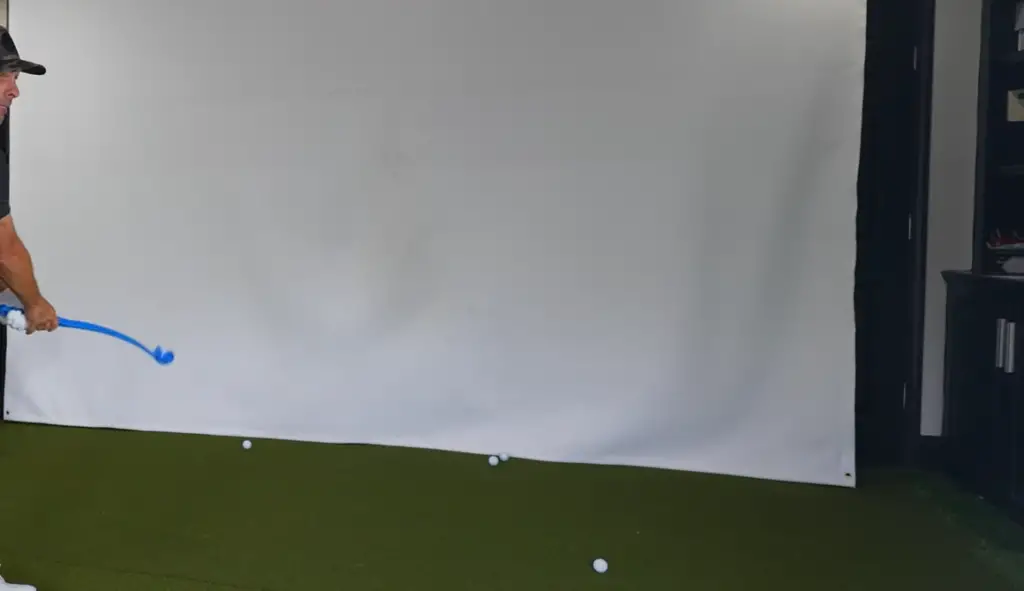
To practice your swing, you can either use a golf simulator or go to the driving range. At the driving range, you want to focus on hitting the ball in the center of the clubface. You can also try different tee heights to see what works best for you. If you are still having trouble, consider taking a golf lesson from a professional.
A golf slice is caused by hitting the ball with an open clubface, which creates backspin on the ball and makes it travel from right to left (for a right-handed golfer). A hook is caused by hitting the ball with a closed clubface, which puts spin on the ball and makes it travel from left to right. Both shots can be corrected with practice and proper technique.
If you are having trouble with your golf game, it is important to seek professional help. A golf instructor can help you diagnose your problem and give you drills to improve your swing. They can also recommend the best clubs for your swing type and help you choose the right ball for your game. With the right instruction and practice, you can correct your slice or hook and start playing better golf in no time!
What percentage of golfers slice the ball?
Some studies say that up to 90 percent of amateur golfers slice the ball. That number seems high, but if you’ve ever played the game, you know that there are a lot of sliced balls out there. Slicing is such a common problem because it’s so easy to do. All it takes is an incorrect swing and the ball will slice off to the right (for right-handed golfers).
There are a few reasons why slicing is such a common issue. First, many people don’t understand how to properly grip the club. If your grip is too weak, it’s more likely that you’ll hit a slice. Second, your stance can also affect whether or not you hit a slice. If you’re not standing in the correct position, it’s much harder to hit the ball straight. And finally, your swing plays a big role in whether or not you hit a slice. If you’re not swinging correctly, it’s almost impossible to avoid slicing the ball.
How do I stop slicing my drive?
If you’re slicing your drive, it’s likely because your clubface is open at impact. To correct this, you can do one of two things: either adjust your grip or practice swinging with a square clubface.
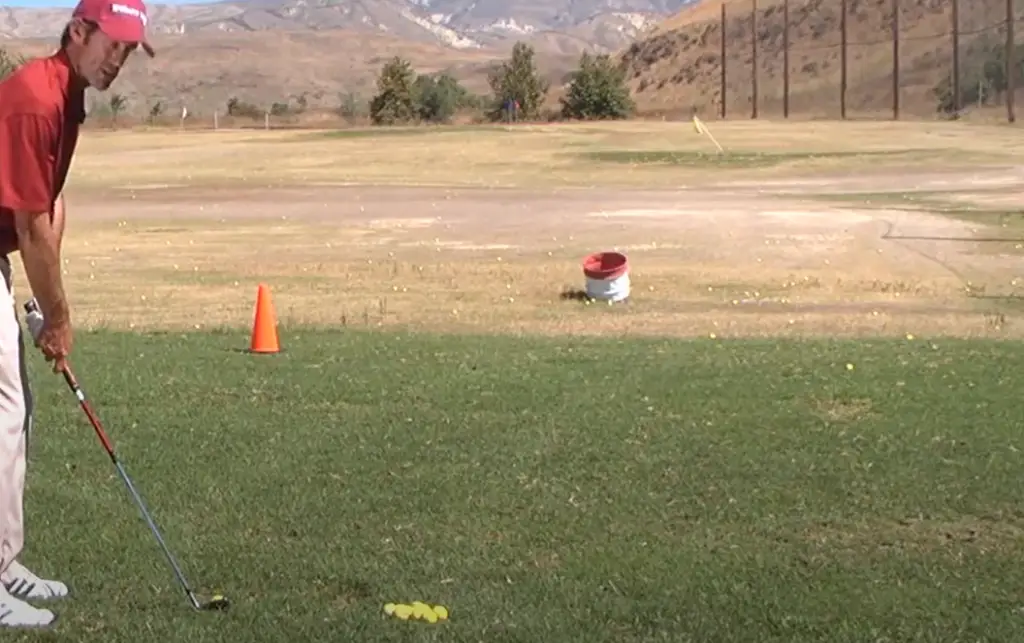
If you adjust your grip, make sure to keep your left hand low on the handle and turn it clockwise until the V formed by your thumb and forefinger points toward your right shoulder. This will close the clubface and help you hit straighter shots.
Practicing with a square clubface will also help you stop slicing your drive. To do this, set up a golf bag or chair in front of you and make sure the clubface is perpendicular to it. Then, take some swings making sure to keep the clubface square to the bag or chair. After a few swings, you should start to feel more comfortable with the correct impact position.
Useful Video: This is Why You Slice and Hook Golf Shots
Conclusion
Now you know everything you need to know about golf slices and hooks. With a little practice, you’ll be hitting the ball straighter and farther in no time.
We hope that this guide has helped clear up any confusion on the topic and provided some useful tips on how to correct your slice or hook. If you have any questions or feedback, please leave us a comment below. Thanks for reading!
References:
- https://southamptongolfclub.com/hook-vs-slice-in-golf/#:~:text=A%20slice%20is%20when%20the,to%20the%20left%2C%20generally%20speaking
- https://usgolftv.com/instruction/hook-vs-slice/
- https://golfcircuit.com/posts/slice-vs-hook-golf/
- https://golfbit.com/slice-vs-hook




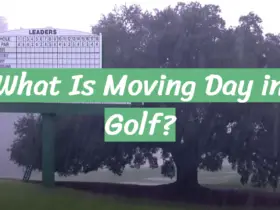


Leave a Reply